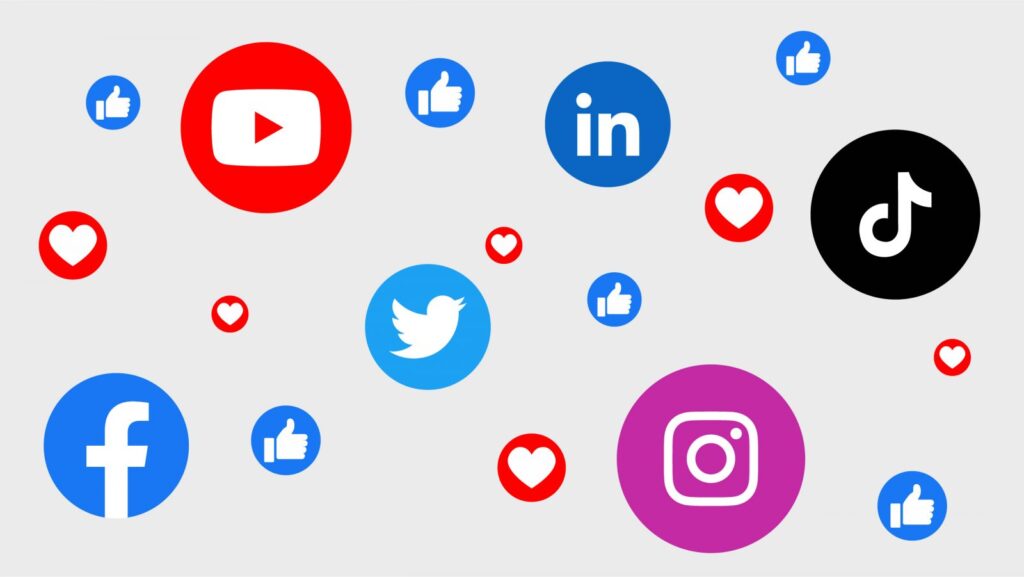When it comes to navigating the vast landscape of social media platforms for marketing, think of it as embarking on a journey where each path leads to varying opportunities. You’ve probably pondered which platforms would suit your marketing needs best, and the choices can be overwhelming. From the ubiquitous Facebook to the visually captivating Instagram, the succinct Twitter, the professional LinkedIn, and the engaging YouTube, each has its unique allure and potential for reaching your audience.
But which one will truly elevate your marketing efforts and yield the best results? Let’s navigate this maze of social media options to uncover the ideal platform for your marketing strategy.
- When strategizing your social media marketing plan, leveraging Facebook’s extensive user base and diverse advertising tools can significantly enhance your brand’s visibility and engagement. With targeted advertising options on Facebook, you can reach specific demographics based on factors like age, location, interests, and online behaviors. This precision allows you to tailor your ads to the most relevant audience, increasing the likelihood of engagement and conversions.
- Furthermore, Facebook provides robust engagement metrics that offer valuable insights into how your audience is interacting with your content. By analyzing metrics such as likes, comments, shares, and click-through rates, you can measure the effectiveness of your campaigns and make data-driven decisions to optimize future strategies. Understanding these engagement metrics enables you to refine your approach, improve audience targeting, and ultimately drive better results for your brand.
- Incorporating targeted advertising and closely monitoring engagement metrics on Facebook can propel your social media marketing efforts to new heights, fostering stronger connections with your audience and driving meaningful outcomes for your brand.

- Leveraging Instagram’s visual-centric platform and influencer partnerships can revolutionize your social media marketing strategy, driving heightened brand engagement and expanding your reach to a more diverse audience. Instagram’s emphasis on visual storytelling makes it a powerful tool for showcasing your brand’s identity and connecting with consumers on a deeper level. By collaborating with influencers who resonate with your target audience, you can tap into their loyal followers and boost your brand’s credibility.
- Monitoring engagement rates is crucial on Instagram, as the platform’s algorithm updates frequently. Understanding these changes and adapting your content strategy accordingly can help you stay ahead of the competition. Engaging with your audience through interactive features like Stories, Reels, and IGTV can further enhance your brand’s visibility and foster a sense of community.
- To maximize your social media marketing impact, harness the real-time conversational power of Twitter to engage with your audience and stay ahead of industry trends. Developing a strong hashtag strategy is key to increasing visibility and joining relevant conversations. Utilize trending hashtags, create unique branded hashtags, and participate in popular hashtag movements to boost your reach and connect with a broader audience.
- When it comes to engagement tactics on Twitter, focus on fostering meaningful interactions. Respond promptly to messages and mentions, retweet and like posts from your followers, and initiate conversations to build relationships. Twitter polls, Q&A sessions, and Twitter chats are effective ways to encourage engagement and gather valuable feedback from your audience.
- Additionally, leverage Twitter analytics to track the performance of your tweets, monitor audience engagement, and adjust your strategy accordingly. By consistently refining your approach based on data insights, you can optimize your Twitter presence for maximum impact in your marketing efforts.
- LinkedIn serves as a powerful platform for professional networking and B2B marketing strategies. When leveraging LinkedIn for marketing purposes, focus on building connections with industry professionals, generating leads, and establishing thought leadership. The platform offers a plethora of tools and features designed to help businesses connect with their target audience effectively.
- One of the key benefits of utilizing LinkedIn for marketing is the opportunity for professional networking. By engaging with other professionals in your industry, you can expand your network, build relationships, and potentially discover new business opportunities. Additionally, LinkedIn provides a platform for showcasing your expertise and establishing credibility within your field.
- Moreover, LinkedIn is a valuable resource for lead generation. Through targeted marketing campaigns, content sharing, and participation in relevant groups and discussions, businesses can attract potential leads and convert them into customers. By consistently sharing valuable content and insights, companies can position themselves as industry leaders and drive engagement with their target audience on the platform.
YouTube
- With its massive user base and engaging multimedia content, YouTube presents a dynamic platform for expanding your marketing reach beyond LinkedIn’s professional networking scope. Leveraging video content on YouTube can significantly enhance your brand visibility and engagement with a broader audience. The platform’s algorithm favors consistent uploads and user interaction, making it essential to create compelling and relevant videos to maintain viewership and attract new followers.
- Consider exploring influencer collaborations on YouTube to tap into established audiences and increase your brand’s credibility. Partnering with influencers who align with your values and target market can help amplify your message and drive conversions. By strategically integrating your brand into influencer content, you can reach potential customers in a more authentic and impactful way.
- Remember to analyze metrics such as watch time, engagement rates, and subscriber growth to optimize your YouTube marketing strategy continually. Stay innovative with your video content and collaborations to stay relevant in the ever-evolving digital landscape.
Conclusion
Based on the analysis of various social media platforms, it’s clear that each has its own strengths and weaknesses when it comes to marketing. Facebook is great for reaching a wide audience, Instagram is ideal for visual content, Twitter is effective for real-time engagement, LinkedIn is best for B2B marketing, and YouTube is perfect for video content. To maximize your marketing efforts, consider utilizing a combination of these platforms based on your specific goals and target audience.


